Tips For A Tooth-Friendly Independence Day

The Fourth of July offers fun activities full of fireworks, parades and celebrations. From hamburgers to watermelon to all kinds of delicious treats, Independence Day is a fun day for everyone. Amid all the celebrating, though, it’s important that you take care of your teeth by watching what you eat and which activities you participate in, especially when wearing braces. There are lots of food options to choose from, but it’s important to keep your oral hygiene routine in check to prevent tooth decay. Find out how you can enjoy Independence Day and protect your teeth at the same time with these tips!
Commit To A Regular Routine
During this holiday season, our lives go from our normal day-to-day routines to boating, barbecuing and playing with sparklers as we watch the fireworks. The Fourth of July is a week full of festivities that involve a lot of food and fun, but it’s also a time that we easily forget to maintain a good oral hygiene routine. Our daily routine should include how we take care of our mouth and teeth, which means we can’t skimp on brushing and flossing, especially with braces. Plaque loves to sit on teeth as long as it can so that acid can form and eat at your tooth enamel. The longer plaque remains on your teeth, the more likely you are to experience tooth decay. During the week of the Fourth of July, it may be tempting to let your kids skip their normal bedtime routine due to a firework show or a late-night party, but even one night of not brushing and flossing lets harmful bacteria wreak havoc on your child’s teeth. Braces are especially susceptible to the effects of poor oral hygiene as they easily trap food particles around the brackets and underneath the archwire. One tip that can help your kids remember their oral health during the holiday is to keep a brushing calendar. These calendars are simple and easy to use, and they help kids stay on track each day, no matter what busy activity they’re participating in. You can find a brushing calendar at most department stores or you can ask your child’s dentist for one.
Avoid Sugary Foods and Drinks

beautiful blonde child drink water outdoor
One of the biggest mistakes that kids and adults alike make during the Fourth of July involves the type of food that they consume, specifically sugary foods or meals full of starches. It’s hard to resist a juicy burger with a slice of cherry pie, a sugary funnel cake or a cold lemonade, but these holiday foods are full of sugar and starches that not only affect your waistline, but your teeth, as well. Eating lots of foods high in sugar increases your risk of cavities, even if you’re good at brushing your teeth. It’s easy to hand your child a juice box or can of soda while they’re watching the parade, but it’s more beneficial if you offer healthier choices, like water, to keep them cool and hydrated. It’s even better if you can give your child water that contains fluoride, which hardens tooth enamel and safeguards teeth against cavities. For picky kids, milk and fresh juices are also alternatives to sugar-packed sodas and do a good job at protecting teeth. Before all of your fun activities begin, plan out snacks and healthy options for meals that you can provide that will protect kids’ teeth while they’re out having fun. For those with braces, make sure to avoid hard foods like corn on the cob, chips and candy, and don’t forget about sticky foods like caramel, taffy and licorice. Hard and sticky foods are notorious for breaking brackets and wires, which are no fun to deal with on the Fourth of July.
Protect Your Braces
Choosing healthy food options over the holidays is an essential part of protecting braces, brackets and wires. Braces are durable orthodontic appliances, but even they can break from a simple accident, like biting an apple. To maintain the structural integrity of your braces, make sure to brush after each meal (which may be difficult to do when you’re out and about) and use threadable floss to remove pesky food particles from getting stuck. You may even need to use a proxabrush, which is referred to as a “Christmas tree brush” that thoroughly cleans between each bracket whenever normal toothbrushing can’t do the trick. Keeping your teeth and braces clean will prevent tooth decay from developing and will help remind you to watch what you’re eating. Lastly, make sure to schedule regular checkups and cleanings with your orthodontist to remove any plaque that may have built up around your braces and ensure that their functioning correctly.
Schedule A Checkup
At Belmar Orthodontics, we are prepared to help you enjoy this year’s Independence Day by providing dental and orthodontic checkups. Our experienced staff is dedicated to your oral health throughout the entire year, and we can help you and your family receive the beautiful smiles that you deserve. To schedule a checkup or for more tips on how you can protect your family’s teeth this Independence Day, call our office at (303) 225-9016. Your journey to a healthy smile begins today!
How Invisalign Can Increase Teens’ Confidence

While many teenagers need orthodontic care, some don’t like how traditional braces make them look or feel. With advances in modern technology and appliances that have been developed, teenagers have more options than ever to straighten their teeth without having to lose their confidence. Invisalign Teen offers the same benefits as traditional braces, but with the ability to use a clear, removable aligner. While nearly undetectable, teenagers will be able to get straight teeth without anyone knowing. Learn how Invisalign works and how your teenager can benefit from its groundbreaking system!
What Is Invisalign Teen?
Most teens will need orthodontic care, but many don’t like the look of traditional braces. Luckily, modern advances in orthodontic technology have created other options for them, such as Invisalign Teen, that allows kids to get straight teeth in one of the most discreet ways possible. Invisalign Teen eliminates the need for metal braces and brackets by replacing them with clear, removable aligners. Clear aligners work just as effectively as traditional braces but without the self-consciousness that metal braces typically bring. Before treatment begins, however, your teen will need an examination by their orthodontist and have diagnostic X-rays and impressions (molds) taken of their teeth. Crowded teeth and/or wisdom teeth may need to be removed before treatment begins so that the aligners can fit properly in the mouth. The orthodontist will then create a set of aligners that your child will wear, one after another, for the space of one to two years. These aligners will straighten their teeth over time, and each aligner will be replaced with another one as teeth begin shifting into proper alignment. Most patients will be required to wear their aligners anywhere from 20-22 hours per day, so your teen will need to be careful and consistent during their time with Invisalign.
Invisalign Teen offers many benefits other than invisible treatment. With Invisalign, your teen won’t have to sacrifice their favorite foods that tend to get stuck in traditional braces; all they need to do is remove the aligner to eat and drink, and they’re good to go. Your kid will also be able to continue playing the sports and activities that they love, and they’ll have less emergency visits since there are no wires or brackets that can break. Invisalign allows kids to use a mouthguard when playing sports and continue playing their instrument because it is removable. With Invisalign, your child will have newfound freedom that other orthodontic treatment can’t provide.
Taking Care of Invisalign Aligners
As with any other orthodontic appliance, your child will need to take strict care of their Invisalign aligners to keep them clean and free from damage. After they remove their aligner to eat or drink, it’s important that they brush their teeth before putting the aligner back in to prevent bacteria from building up on their teeth, which can lead to tooth decay. Additionally, your teen needs to brush their aligner each night before bed to keep them fresh and clean. Your teen will most likely be wearing their aligner for one to two weeks at a time, with a checkup every six to eight weeks to pick up their new aligner, so it’s essential that they keep their aligners in a safe place during that time. Aligners can break when dropped or can be damaged by pets or little siblings, so proper storage whenever they’re not being used will keep any accidents from happening.
Importance of Good Oral Hygiene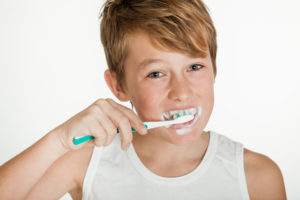
Having a good oral hygiene regimen will protect your child’s teeth from disease and keep their treatment plan on track. If teeth aren’t taken care of, orthodontic care can be slowed down as the orthodontist will have to address their cavities or tooth decay before treatment can continue. Brushing and flossing are essential before, during and after orthodontic care to keep teeth healthy and strong. Make sure that your teen is brushing with a fluoride toothpaste to strengthen their tooth enamel. Consistent flossing will also keep teeth decay-free by removing food particles that can get stuck and allow bacteria to grow. Additionally, using a fluoride mouthwash can aid brushing and flossing by adding the extra punch that teeth need to fight plaque and decay.
Scheduling A Consultation
If your teen would benefit from Invisalign, call Belmar Orthodontics today at (303) 225-9016! Our team of dedicated professionals is experienced with fitting Invisalign Teen and helping your child feel comfortable and satisfied during orthodontic treatment. Call today to begin your teen’s treatment for a beautiful, confident smile!
Interesting Facts About Teeth and Dentistry

Our teeth are one of the most important parts of our bodies, and they are each unique to us. Our teeth are like a fingerprint: they are individual to us and never the same as anyone else’s. Teeth perform specific functions that are essential for speaking and eating. Our teeth have enamel, which is the hardest substance in the body and it protects our teeth from decay. The more that we learn about our teeth, the more important it is for us to take care of them. Find out what all our teeth do and how they help us with this guide!
Facts About Dentistry
For hundreds, and even thousands, of years, dentistry has been an important aspect of human’s lives. Even though dental technology and knowledge might not have been as well known a few thousand years ago, our ancestors still understood the importance of taking care of their teeth. People have been caring for their teeth for centuries, and historians have found evidence of dental care dating back to 5000 B.C. in ancient Egypt. The Egyptians would use crushed eggshells and ground animal hooves to clean and polish their teeth, before toothbrushes were invented. The first toothbrushes that were used anciently were actually twigs, or tree bark, that our ancestors would chew on, hoping that the frayed ends would clean their teeth. It wouldn’t be until the 1700s when a British inventor created an adapted version of a toothbrush that he had seen in China, one with a bone handle with boar bristles inserted into small holes that lined the brush and then secured with wire. Even up to the 1930s, toothbrushes were still rudimentary, until brushes with nylon bristles and ergonomic handles were developed, which is what we still use today.
Facts About Teeth
Although oral hygiene was important to our ancestors, little was known about the function and specifics of teeth that modern technology has allowed us to learn about in our day and age. Teeth are the hardest substances in our bodies, and enamel helps keep them strong and durable. We use teeth to eat, speak and chew, so they’re an important part of how we live. Even though they are hard, white and contain calcium, teeth are not bones! They cannot heal themselves or grow back if they sustain damage, so it’s very important that we are careful with what we eat and the activities that we engage in to avoid any unnecessary trauma. Additionally, teeth contain stem cells. Some researchers are even trying to use dental stem cells to regrow human teeth, which, if they can do it, would mean that we could replace lost adult teeth for the first time in history. Not only do teeth have stem cells, but they are also unique to each one of us and tell a story. Each tooth in our mouths is unique and different from the rest, and never is identical to someone else’s. Our teeth reveal how old we are, what we eat and even areas of the world that we have lived in! They are a lasting record of our life’s history.
Our mouths, and the teeth that are found therein, perform amazing functions that facilitate our ability to eat and digest food properly. Although they may be amazing, our mouths have some unusual quirks that most people don’t know about. The following are some of the weird facts about our mouth and teeth that one should think about:
- Teeth form in the womb, months before a child is even born. The crowns of babies’ first 20 teeth are already under the gumline when they are born, waiting to erupt.
- The average human produces 25,000 quarts of saliva in their lifetime, enough to fill two swimming pools.
- Plaque found on teeth contains more than 300 kinds of bacteria.
- Humans spend 38.5 days of their life brushing their teeth.
Good Dental Habits To Have
Now more than any generation before us, we have a limitless amount of options to choose from to protect our oral health and develop strong, healthy teeth. Our teeth do so much for us, so it’s important that we do everything we can to protect them. First and foremost, brushing and flossing should become part of our daily routine. Especially if your or your child has braces or an orthodontic device, maintaining a strict brushing and flossing regimen will prevent tooth decay and cavities. Brushing removes debris on the surface of the tooth while flossing removes food particles that can get stuck between teeth or near the gumline, where plaque can easily build up. Furthermore, regular checkups for both you and your child with your dentist and/or orthodontist will allow them to monitor teeth movement and keep your teeth as shiny and beautiful as possible.
For more information on what you can do to protect your teeth with or without braces, call Belmar Orthodontics at (303) 225-9016! Our dedicated team is committed to helping you and your family receive the care that you need and get the smiles that you deserve!
The Impact Of Straight Teeth On Oral Health
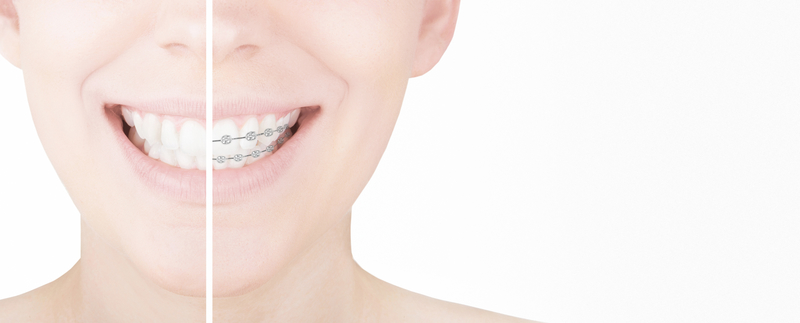
Many orthodontic patients use braces so that they can have straight teeth, but that’s not the only reason why orthodontic care is so important. Having straight teeth can minimize the likelihood of tooth decay and tooth loss while improving your bite, which affects your ability to chew and speak. Correcting crooked teeth can also improve your oral hygiene and strengthen teeth. Learn more about the positive effects that straight teeth can have on your oral health through this guide!
How Straight Teeth Can Help You
One of the main goals of braces is to create a straight smile and correct any orthodontic issues that may prevent teeth from remaining straight. While orthodontics does focus on straightening patients’ teeth, this is not the only purpose of receiving orthodontic care. Whenever a patient has malocclusion, or bad bite, caused by crowded or crooked teeth, daily oral hygiene can become a difficult task. Malocclusion can also stem from teeth that are out of alignment, or jaws that do not meet properly. Thumb sucking or accidents to the teeth can also cause malocclusion. As oral hygiene becomes more difficult to maintain, the likelihood of dental complications, such as tooth decay, periodontal disease, and tooth loss, increases. An improper bite that goes unaddressed can negatively affect chewing and speaking, and wear down tooth enamel. Correcting these problems is of utmost importance to your orthodontist as they seek to give you the best care possible. Orthodontic care that helps straighten teeth can decrease and ultimately eliminate the chances of any of these complications from arising. With straight teeth, patients can better brush and floss their teeth, which will help strengthen them, while easily monitoring any changes that may occur.
What To Expect With Orthodontics
As you begin your orthodontic treatment, there are a few tips that you should know to prepare yourself for what will be expected of you during your time with braces. Although there are some challenges with straightening adult teeth versus children’s teeth due to the pliability of the jawbone, modern technology allows any adult of any age the opportunity to correct crooked teeth with remarkable success. You will first meet with an orthodontist for an evaluation and orthodontics consultation to determine what option is best for your mouth. Any oral health issues, such as gum disease, will have to be resolved before you can begin treatment. Adults have a variety of options to choose from for their orthodontic care, with many discreet options, such as ceramic or clear braces, lingual braces, and Invisalign clear removable retainers, that are available for your needs.
For children, treatment is similar to that of adults and can start as early as the age of 7. Having an orthodontic examination early on can prevent the progression of orthodontic issues that are present and allow the orthodontist to monitor the development/eruption of teeth. Aesthetically-minded treatment options, such as incognito lingual braces, are available for young children who may be self-conscious about their orthodontic care. Most children and adults can expect treatment for 1-3 years, followed by a period of time in which a retainer will be used to keep teeth in their newly aligned positions. Regular dental and orthodontic visits will be necessary to track the progress of teeth and manage any plaque or tartar buildup that could accrue between teeth.
How To Keep Your Straight Teeth Healthy
Once you or your child finishes orthodontic treatment, it is important to continue certain oral health standards to maintain the health of your gums and teeth. Eating a healthy diet, with or without braces, while limiting the amount of sugary foods you consume, will prevent plaque that can stain or damage your teeth. Brushing with fluoride toothpaste and flossing each day will also prevent any plaque buildup, prevent cavities, and keep your teeth clean. Good oral hygiene is especially important for patients wearing braces because you are more susceptible to plaque buildup around brackets and underneath wires. For additional protection, consider using a mouth guard while playing any sports or activities that could damage your mouth, if hit. Creating a good oral health regimen before you start orthodontic treatment will help you have a healthy mouth during and once braces are removed.
For more information on the importance of straight teeth on oral health and what you can do to get the straight teeth that you want, call Belmar Orthodontics at (303) 225-9016! If you’re ready to change your smile for the better, our team is ready to help you reach that goal for you and the rest of your family!
Orthodontic Appliances Your Child Might Need

As orthodontic technology has improved throughout the years, so have the different appliances that are used to treat children with braces. Depending on their jaw and bone structure, your child may need an orthodontic device to help guide their teeth and jaw into proper alignment. These orthodontic appliances are used to maintain space in the mouth and allow for proper tooth eruption and movement. Find out what types of appliances are available and which is best for your child’s needs through these tips!
Benefits of Child Orthodontics
Many, if not most, dental patients will receive some form of orthodontic treatment during their lifetime. Even if one’s teeth doesn’t show any kind of orthodontic issues, it is advantageous that patients, especially children, visit with an orthodontist to maintain good oral health. The American Association of Orthodontics recommends that children have their first orthodontic visit between the ages of 7 and 8 to prevent the progression of any orthodontic issues that may already be developing. Orthodontic treatment can lead to healthy, beautiful smiles at any age, but is most beneficial when completed at an earlier age. Some benefits of visiting the orthodontist early on include observing the progress of incoming teeth, reducing the risk of impacted teeth, and monitoring facial and jaw development. Early orthodontic evaluations can discover hidden dental issues and decrease the risk for permanent teeth extractions, as well. Early detection of any dental issue is vital in maintaining good oral health for patients of all ages, and should be a goal that all children should obtain from an early age.
Types of Appliances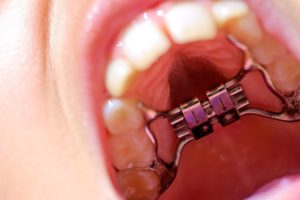
Whenever patients think of “orthodontia,” they typically think of braces. For young patients, braces are common orthodontic appliances that they can receive to straighten their teeth and correct any dental issues. Child orthodontics includes other appliances than just braces, though, and these appliances fulfill an important function in your child’s overall treatment. Orthodontic appliances change the way your child’s mouth works by correcting certain bone problems. Headgear, for example, guides the jaw into the proper direction by holding the upper jaw until the lower jaw can catch up with it. Retainers are other useful tools that keep teeth in the correct position after braces are removed, and most children will use some type of retainer during or after their treatment.
There are other orthodontic appliances that aren’t as well known but are used quite often in child orthodontics. The Nance “Button” is one of those appliances that uses a holding arch to maintain space in the mouth for children who have lost their baby teeth and are waiting for permanent teeth to grow in. If baby teeth are lost prematurely, the first molars might move forward into an incorrect position as they erupt because there is nothing holding them back. The Nance is an acrylic plate (the button) that covers a section of the palate with two metal bands around the back teeth to hold them into position until permanent teeth develop. This process helps maintain the proper space for permanent teeth to grow into. Another less-known appliance is the lower lingual holding arch, which does the same thing as the Nance but for the lower teeth. Two metal bands are cemented to the lower molars, joined by a U-shaped bar that rests behind the lower teeth. This keeps the back teeth from moving forward and maintains the space needed for future permanent teeth to erupt. Lastly, twin blocks are used to correct misalignments in the jaw that cause your child’s top teeth to stick out in front of the lower teeth further than normal. The blocks consist of two plates, one on the upper teeth and the other on the lower. These work together to bring your child’s lower jaw forward into the correct position, but is most successful when inserted while your child’s bones are still growing. They are the fastest-working appliances, and create quick results. Any of these appliances can be used in your child’s orthodontic treatment, so if you have questions about how they function or which one would be best to implement, make sure to ask your orthodontist.
What To Expect At The First Appointment
Most adult teeth erupt between the ages of 6 and 12, so whenever your child’s first permanent molars begin developing, the dentist will need to evaluate them to see how they work together. This process is called a “bite check,” and it helps orthodontists determine in what stage your child’s teeth are and what their treatment will require. The dentist will then decide which type of appliance would work best for your child and what instructions they will need to follow to get the best results out of their treatment. When using an orthodontic appliance, good oral hygiene will be necessary to prevent plaque buildup and other dental complications that could extend your child’s treatment time. Having your child brush and floss their teeth every day, along with cleaning whichever orthodontic appliance they’re given, will ensure that they get the healthiest and fastest treatment possible.
If your child is due for an orthodontic visit, or if they’re experiencing any of the orthodontic issues that we’ve discussed, call Belmar Orthodontics at (303) 225-9016 for a consultation to improve their oral health. Our dedicated team is ready to help you create a plan for your child to get them the smile that they deserve!
How Upper Jaw Expansion Can Benefit Your Child
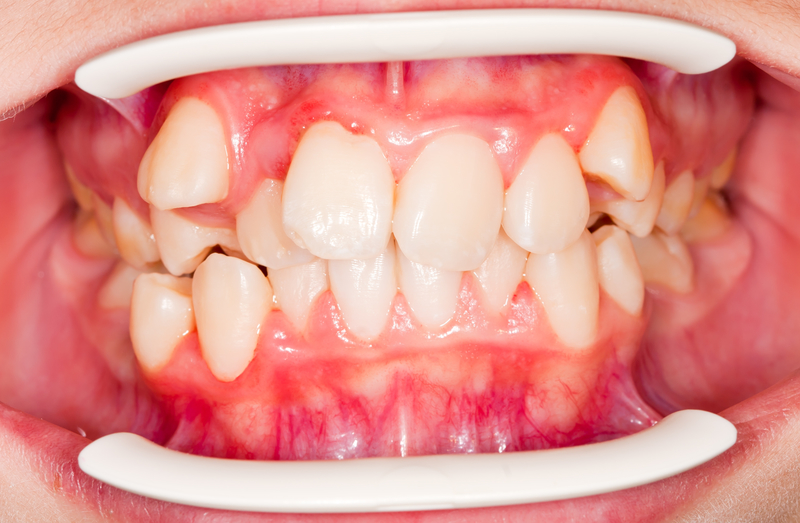
Upper jaw expansion is an orthodontic treatment that creates more space growth for developing kids by widening the circumference of the palate. This procedure helps correct crossbites, reduces overcrowding, and improves breathing ability. Most adolescents will receive this treatment before 16 years of age, but adults can also expand their upper jaw, if needed, as well. Read on to find out how upper jaw expansion works and what the advantages are with these tips!
Jaw Positioning and Malocclusion
Many patients deal with malocclusion, or crooked teeth and a poor bite. A poor bite refers to the way the upper and lower teeth line up, which is affected by the structure of the jaw. A “normal bite” consists of the upper teeth sitting slightly forward of the lower teeth, which allows for proper movement. Malocclusion is normally a cosmetic problem, but when it interferes with how teeth erupt, it can cause crooked teeth and tooth decay. A common cause of malocclusion is having too much or too little room in the jaw, which affects whether teeth grow in crowded or crooked. The shape and size of the jaw can also affect how severe someone’s malocclusion is, but thumb-sucking and tooth loss can also influence this process. For many patients, especially children, malocclusion is caused by a limited amount of space in the mouth for teeth to grow, so they either grow in crooked or the bite is altered. For this reason, many young dental patients receive upper jaw expansion treatments to allow more room in the mouth and prevent malocclusion. As more study and insight has been gained on the structure of the mouth, there are now more possibilities to fix incorrect bites, adjust occlusion and prevent crooked teeth starting from an earlier age.
Reasons For Upper Jaw Expansion
Upper jaw expansion is a specific treatment for widening the circumference of the palate to increase the perimeter of the dental arch in the mouth, which creates more space for teeth to grow. When there is enough room for teeth to grow, they are more likely to develop correctly. During childhood, palatal or maxillary expanders are used to aid this process. Through these expanders, dentists can help correct a crossbite that is caused by malocclusion. Normally, the upper teeth should close around the outside of the lower teeth, but when someone has a narrow palate, the opposite can occur and create a crossbite. As the upper teeth bite inside the lower teeth, an asymmetrical growth of the lower jaw can develop and change the symmetry of one’s face. This can cause serious complications if not addressed early on. Lastly, upper jaw expansion methods improve breathing ability, which is greatly affected by a narrow jaw. A narrow or deep upper jaw can make it difficult for a child to breathe through their nose and results in constant mouth breathing. While it doesn’t sound very serious, consistent mouth breathing keeps the mouth open at night, allowing for unfiltered bacteria to enter into the oral cavity, causing dry mouth and halitosis (bad breath).
Treatment Options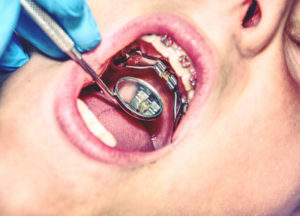
Upper jaw expansion is most successful when done at an earlier age while the mouth is still developing. For adults, those with a crossbite may only need a dental expansion instead of a palatal expansion, but may need surgery if palatal expansion is required to fix concerns. Depending on the age of the patient and the reason for treatment, a rapid palatal expander (RPE) may be used to increase the width of the jaw. The RPE is attached to the upper molars by bonding or cemented bands, and uses a special key that is used to widen the space by turning a screw in the appliance at certain points in time. This process puts extra pressure on the two halves of the upper jaw, which causes extra bone to grow between them. Gradually, by turning the screw with the key each day, the jaw widens to make room available for developing teeth. For adults, removable expanders can be used, as well, whenever the degree of expansion is minimal. Resembling a partial denture, removable expanders are typically made of chrome and recommended for adults as they more easily comply with treatment. After treatment, an orthodontic retainer may be given to maintain the space until all permanent teeth have developed. A third but least common option for expansion is a surgically assisted rapid palatal expander (SARPE), which is a combination of orthodontic treatment and surgery. This is used in the case that expansion cannot be achieved by the appliance alone. A custom appliance is made before surgery, and while during surgery, the upper jaw is intentionally fractured to separate it into movable sections. This allows the bone to grow between the fractures after the appliance is inserted.
Pros and Cons
Palatal expanders help straighten teeth, improve breathing and fix incorrect bites, but there are important suggestions to make note of. Since children are most likely to have one, a palatal expander, just like any orthodontic appliance, needs to be thoroughly cleaned each day to prevent plaque buildup and decay around the teeth. For young children, this can be difficult to do without help and can be easily overlooked, so parental supervision is essential. Additionally, the entire process can cost up to $3,000, depending on the degree of correction. For many, there is also some minor discomfort during expansion, but it is well worth it when you’re avoiding an inaccurate bite later in life.
For more information on which treatment option is best to fix yours or your child’s palate, call Belmar Orthodontics at (303) 225-9016! Our experienced team is dedicated to improving your oral health and getting you the smile that you deserve!
Rubber Bands and Braces

Why use rubber bands with braces? Some people have them, and some people don’t need to use them at all. Along with brackets, archwires, and ligatures, rubber bands are just another part of braces. Rubber bands are extremely helpful as they help move the teeth and jaw into proper alignment. They are connected to the actual bracket and help improve your bite. If your jaw is misaligned, read on to discover how rubber bands might be the option to straighten your teeth and jaw at the same time!
Parts of Braces
Modern technology has changed the lives, and smiles, of millions of patients worldwide who have used or currently use braces. Nowadays, braces can be as inconspicuous as we want, with some brackets being attached to the backs of teeth, rather than the front, for a more aesthetic appeal. With the invention of a variety of orthodontic appliances, such as lingual braces, Invisalign, clear braces, and traditional, the patient can decide what braces fits their oral health goals the best. Along with the many types of braces we learn about, there are also other parts of braces that we aren’t as familiar with, such as “bracket,” “archwire,” “springs,” and “ligatures.” We have heard of the different components of braces, but what does an archwire do? How do springs help adjust our teeth? Depending on your needs, your orthodontist will install any of these appliances to help you get the best smile in the shortest amount of time possible.
Brackets are the square part of the braces that are directly attached to the tooth, usually through a cement that bonds it to each individual tooth. They are usually made of steel or clear ceramic, and they guide the archwire into the appropriate placement. The archwire is held by brackets and is designed to guide the movement of the teeth during treatment. They are normally made from stainless steel, but also can be made with titanium. Springs go between brackets and around the archwire and are also made of stainless steel or titanium. They function as a force that opens or closes a space between teeth. The archwire and the bracket are connected through ligatures, which are the little rubber bands that wrap around each bracket to hold the archwire in place. For adolescents, these are usually the best part about braces because they come in a variety of colors that kids can choose from, and are changed after each orthodontic visit whenever the archwire is tightened. Although ligatures are rubber bands, they are not the same thing as interarch rubber bands, which have a major impact on jaw and bite alignment.
Rubber Bands
Interarch rubber bands, commonly known as “rubber bands” or “elastics,” ensure that your child’s teeth are lining up properly. They adjust bite and jaw position, such as an overbite or underbite, and are connected to the bracket with hooks. They create a force to move the teeth in a particular direction, specifically closer together. The top and bottom tooth bracket are connected through these bands, which adjusts the position of the teeth in the mouth and the position of the jaw. These rubber bands are removed during meals as well as while cleaning your teeth and brackets. Usually, they are replaced daily because of the wear they endure and their likelihood of breaking if used for too long. When worn to adjust a misaligned bite, interarch rubber bands are typically worn at all times, except for when eating or cleaning your teeth. If the treatment is only minor, you might only have to wear the bands at night. The consistent tension on the teeth and jaw is what makes these bands effective. If a patient doesn’t wear their bands in the prescribed manner, whether it be the length of time is too short or you’re wearing more bands than normal, this can lengthen treatment time and move your teeth in an unintended way. Not every patient will have to use interarch rubber bands, but if your orthodontic prescribes you to wear them, make sure that you follow his or her directions exactly and take good care of your bands.
Do’s and Don’ts of Braces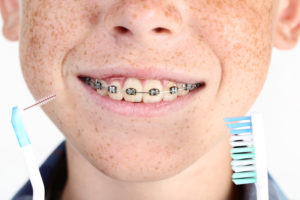
While braces have revolutionized the dental and orthodontic professions, there are some rules that a patient needs to follow to protect and get the most use out of their orthodontic appliances. Always make sure to keep your teeth clean when wearing braces. Brushing and flossing under the archwire and between the brackets is essential to remove plaque, which can easily build up on your teeth with braces. To make sure that your teeth are being cleaned entirely, replace your toothbrush every three months or as soon as the bristles are frayed. Go to all of your orthodontic appointments so that they can adjust your archwire and monitor your teeth’s movement. If you delay your adjustments, your treatment time can be increased, which can be expensive.
Even though braces are strong, you can still break a bracket or an archwire with the things that you eat. Avoid foods that can get stuck in your teeth or your braces, such as nuts, popcorn, hard candy, ice, and sticky foods like chewing gum or caramel. Try not to eat as much sugary foods as it can lead to tooth decay around the brackets, which can permanently damage your teeth. Especially for active teenagers and adults, use a mouthguard during physical activity or when playing a sport to protect your mouth and jaw from getting hurt. Following this list of do’s and don’ts will increase the likelihood of having a positive and shorter experience with braces.
Getting The Smile You Deserve
For other tips and suggestions about orthodontic appliances and which one is best for you, call Belmar Orthodontics at (303) 225-9016 for a comprehensive exam. With our team of qualified and dedicated individuals, we will provide you or your child with the best orthodontic care for a great price. Call now to learn more!
Dental Emergencies With Braces
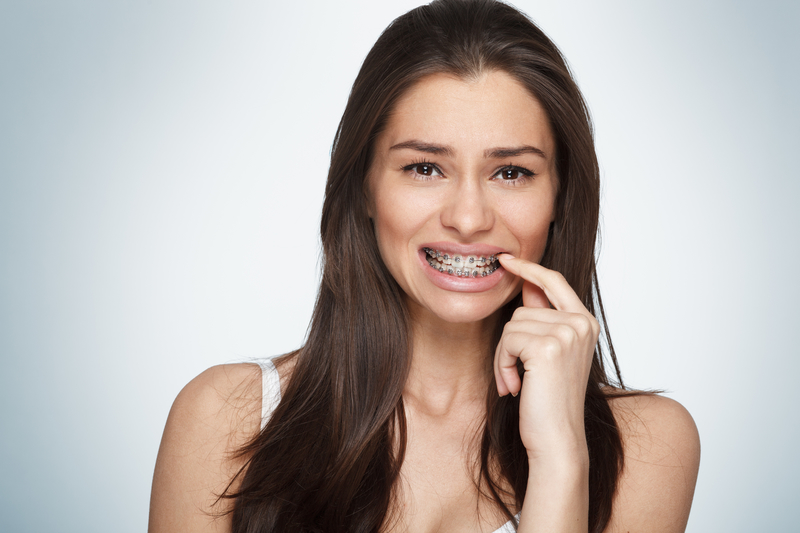
Braces are incredible devices that can help transform your teeth and reshape your jaws. However, they are not always fool-proof. Every so often, a patient will have a dental emergency. That may be a bad cavity that needs to be fixed, or a bracket or wire will break. There are only a few dental emergencies that can happen with braces. We can help you to know what to do when each of those emergencies happen!
Origins of Braces
Orthodontic treatments have been around for a long time-even as far back as the ancient Egyptians! Although their ways were archaic, people for centuries have been trying to fix crooked teeth and develop a prettier smile through orthodontic work. The ancient Greeks, Romans, and Etruscans were known to have practiced orthodontia, and interestingly, the Etruscans used to attach gold bands to women’s teeth to preserve the position of their teeth after death. Orthodontics saw a surge in progress during the 18th century thanks to Pierre Fauchard. Known as the “Father of Dentistry,” he invented an appliance called a bandeau, which was a horseshoe-shaped piece of metal with regularly spaced holes that fit around the teeth to correct the alignment. He would also use forceps to physically realign teeth into their correct positions and tie them to neighboring teeth until they healed.
Orthodontics in the United States exploded during the 19th century. J.S. Gunnell created a type of headgear that fashioned to the head and exerted a soft pull on teeth while Charles Goodyear invented vulcanized rubber which would eventually become one of the most commonly used appliances in orthodontics. But Edward Hartley Angle, the “Father of Modern Orthodontics,” took orthodontics to another level by identifying the true properties of malocclusion, or misalignment, and addressed them with his own set of orthodontic appliances in 1880. Until the 1970s, orthodontist would attach anchored brackets around each tooth with winding wires, but with the invention of dental adhesives, orthodontists could then stick the brackets to teeth surfaces. Stainless steel then replaced gold and silver as the most popular option for wires, due to its manipulability, and became the most cost-efficient option for braces.
Dental Emergencies and What To Do About Them
Braces have come a long way since their beginnings many centuries ago, but as braces have evolved, so have the problems that come with them. Although dental emergencies are few and far between when it comes to braces, there are some common issues that can be readily addressed and fixed if serious enough. The least serious issues that you can have with your braces is tooth tenderness and lip and cheek sores. As your teeth become accustomed to your braces, your teeth will most likely be sore for 2-4 days. Using headgear, rubber bands, and springs can add to this soreness, but that discomfort normally goes away in the same amount of time. Eating soft foods and taking an over the counter pain reliever can help dull the ache. Loose or broke bands and brackets are also another annoyance that sometimes occur with braces. Although not considered an emergency, they normally break due to patient’s eating prohibited foods or picking at their braces. Whenever this occurs, place a piece of wax on the spot of irritation and wait until your next orthodontic appointment, unless the broken bracket breaks on one of the upper or lower front four teeth, then call your orthodontist as soon as possible.
Protruding wires are not only bothersome, but can stab the inside of your lips and mouth if not fixed. Wires can come loose from eating sticky foods, like candy, or by picking at your braces. If this has occurred, try using a Q-tip or pencil eraser to push the wire in towards the teeth. To avoid accidental damage to the wire, make sure to not bite your nails or pens and pencils. In rare occasions, a piece of the appliance may break and be swallowed by the patient. Although alarming, keep calm and have someone look in your mouth to see if the appliance if visible. If confident that you can remove it, you may carefully attempt to do so. If you are unable to see the piece, are coughing excessively, or having difficulty breathing, that could be a sign that the piece could have been aspirated and you should contact your orthodontist immediately.
How To Protect Your Braces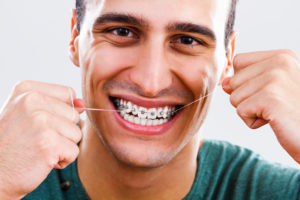
Unless under extenuating circumstances, most dental emergencies are avoidable. Maintaining good oral health and hygiene throughout your time with braces is vital in ensuring healthy teeth and gums, and preventing cavities. Food particles are easier to get stuck between braces, and when not cleaned thoroughly, can lead to other dental emergencies, like tooth decay, which can cause major complications. Hard foods, sticky foods, and foods high in sugar should be avoided as they are known to break brackets and cause cavities, which you more susceptible of developing while wearing braces. Some of the need-to-avoid foods include hard candy, nuts, apples, popcorn, ice, gum, caramel, and licorice.
Because braces are so notorious for getting food stuck in them, make sure that you are brushing after every meal to prevent staining and reducing bacteria buildup in your mouth. Use a soft brush, and brush each tooth by starting at the top and brushing down, then repeating the motion and brushing up around each bracket. Use threadable floss of a floss threader to get the hard to reach areas in between teeth that are covered by the archwire. Using the pointed end, insert between the teeth and gently move the floss back and forth between the two teeth. For added care, use a proxabrush, sometimes called a “Christmas tree brush,” to scrub between each bracket in an up and down motion to get any extra gunk that might be stuck there. For any dental emergencies that you might be having, make sure to contact Belmar Orthodontics at (303) 225-9016 for your next consultation!
Choosing A Good Toothbrush
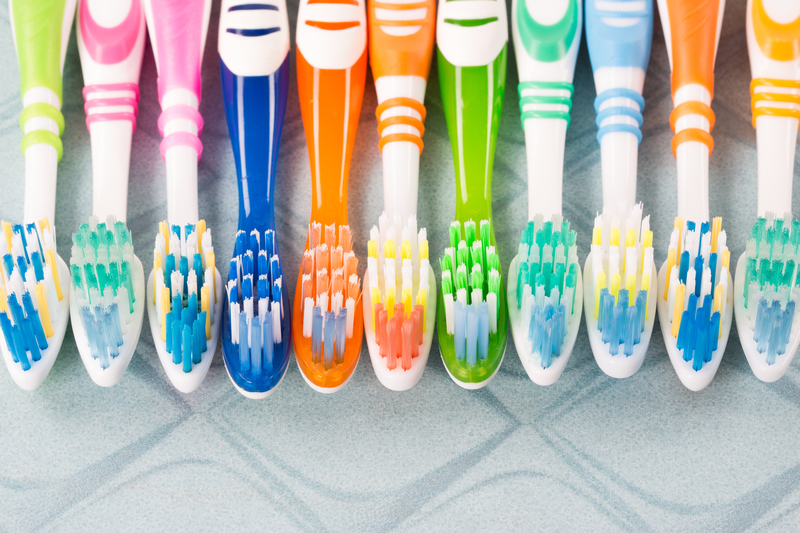
Do you ever look at all the toothbrush options at the store and wonder what the difference is between all of them? Toothbrushes come in all shapes and sizes, and it’s for a reason. They are made to fit certain sizes of mouth. Bristles come in various materials and designs, and there are extra features on some toothbrushes. So what should you choose? Use these tips for the next time you pick out your toothbrush so you know you’re getting a good one for your mouth!
Why So Many Different Kinds?
For something that is so simple to use, there sure are a lot of different toothbrushes out there. Toothbrushes have been around for centuries, with some historians quoting them as being as old as 3000 BC! Ancient civilizations used a “chew stick,” or a twig that had a frayed end in which they would brush their teeth. The common bristled toothbrushes that we are so familiar with didn’t come into existence until around 1498 in China. The bristles that were used in these toothbrushes were actually hog hair that were attached to handles made of bamboo or bone. Even these evolved, though, into the toothbrushes that we use today, but instead with nylon bristles and plastic handles.
Since World War II, oral health has increased in popularity and a variety of different toothbrushes have been invented. But which ones are best? How do you know which toothbrush is for you? Toothbrushes are specifically designed for different sizes and shapes of mouths, plus there are age-specific toothbrushes, like for children, that have smaller (or larger) handles and bristles depending on the age of the person. No matter what toothbrush you use, the principle behind it should be the same: improve your oral health care and prevent disease. Your toothbrush should be helping you do that, if you’re using the right one.
Types of Toothbrushes
There are basically two types of toothbrushes: soft-bristled and hard-bristled. Most dental professionals agree that using a soft-bristled toothbrush is best for cleaning plaque and debris on your teeth. Hard-bristled toothbrushes are not recommended as they are known to wear away your enamel and can lead to gum recession and lesions. Although they do remove more plaque than traditional soft-bristled toothbrushes, hard-bristles cause more damage than good, even when trying to get rid of tough plaque. Toothbrushes with small heads are also great to use because they can get into the hard-to-reach places in your mouth. When deciding between a small-headed or large-headed toothbrush, keep in mind that the size of your mouth should be the determinant for which one you buy. Those people with large mouths should use a full-sized toothbrush head, while those with smaller mouths should utilize a more compact head.
Toothbrushes also vary in the type of the handle (non-slip grip or flexible neck), shape of the head (tapered or rectangular), and style of bristles (rippled, flat, or dome shape). Although there are a variety of kinds, ultimately the best toothbrush is one that fits your mouth and allows you to reach all of your teeth easily. To figure out which one works best for you, trying toothbrushes with different bristle styles or head shapes is recommended until you find one that is most comfortable.
Manual or Electric: Which is Better?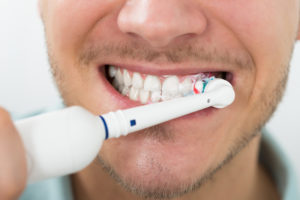
With the advent of the electric toothbrush, many people have been drawn to its ease of use and effectiveness. While manual toothbrushes have been used for centuries, the electric toothbrush is faster and more efficient. If you’re a diligent brusher, manual toothbrushes are a great option, but for those who want the toothbrush to do the work for them, electric is the way to go. Just like manual toothbrushes, electric toothbrushes come in different sizes and have a variety of replaceable heads. Electric toothbrushes are known for having smaller heads than manual, so at the beginning, it may take some time getting used to their small size.
Because of their size, electric toothbrushes are able to clean teeth more thoroughly and get to hard-to-reach areas of the mouth better than manual toothbrushes can. Electric toothbrushes also use different types of bristles movements, such as oscillating/rotating technology, that has been proven to remove more bacteria and plaque than manual toothbrushes. Additionally, electric toothbrushes have a smaller likelihood of hurting your enamel and gums, which is advantageous for those individuals who have sensitive teeth and gums. Whether you choose manual or electric, the most important takeaway is that both fit your mouth size and allow you to clean each individual tooth. If your toothbrush can do both of those things, you’re on your way to achieving great oral health and a nicer smile.
Tips For A Cleaner Mouth
Having the correct toothbrush for your mouth is the first step in maintaining good oral health. But a common question that many have is, “What is the correct way to brush my teeth?” When using a regular soft brush, make sure to angle the brush along the gum line and brush down from the top, then up from the bottom on each tooth in small circles. This motion helps get out the tiny food particles stuck between your teeth, plus it protects your gums from over-brushing. If your gums tend to bleed when brushing, that usually indicates that the gums are inflamed and those areas should actually be brushed more thoroughly and more often. Also make sure that you are brushing your chewing surfaces, the inside of your teeth, and your tongue.
For more tips on how to protect your teeth and maintain a healthier mouth, visit your local provider at Belmar Orthodontics. Change your oral health for the better by calling (303) 225-9016 and setting up your first consult for the comfort, care, and personalized treatment that you deserve!
